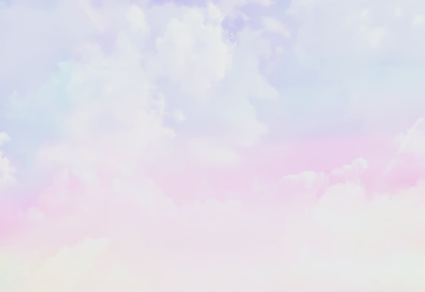### **Complete Color Palette For Desktop Theme:** | **Element** | **Color Code** | **Description** | | | | | | **Primary Background** | #2 E1 F1 B | Main Workspace Background | | **Secondary Background** | #3 A2 C28 | Sidebars, Panels, Or Toolbars | | **Modal Background** | #3 C2 F2 A | Pop Ups, Modals, And Dialogs | | **Drop Shadows** | #1 A0 F0 B | Subtle Shadow Effects | | **Primary Text** | #D9 E0 Ee | Main Text Throughout The Interface| | **Secondary Text** | #B4 B7 C1 | Less Prominent Text | | **Disabled Text** | #787 C8 A | Inactive Or Disabled Text | | **Text In Input Fields** | #D9 E0 Ee | Text In Form Fields | | **Active Buttons** | #F4 C1 C1 | Active Buttons And Clickable Elements | | **Hover States** | #F4 C1 C1 | Hover Effects For Interactive Elements | | **Selected Text** | #F4 C1 C1 | Selected Text Highlight | | **Search Results** | #F4 C1 C1 | Search Term Highlights | | **Focus States** | #F4 C1 C1 | Focused Form Fields Or Elements | | **Success Indicator** | #A6 E3 A1 | Success Feedback (Green) | | **Error Indicator** | #F38 Ba8 | Error Feedback (Pink) | | **Warning Indicator** | #F9 E2 Af | Warning Feedback (Yellow Orange) |
### **Complete Color Palette for Desktop Theme:** | **Element** | **Color Code** | **Description** | |----------------------------|----------------|-----------------------------------| | **Primary Background** | #2E1F1B | Main workspace background | | **Secondary Background** | #3A2C28 | Sidebars, panels, or toolbars | | **Modal Background** | #3C2F2A | Pop-ups, modals, and dialogs | | **Drop Shadows** | #1A0F0B | Subtle shadow effects | | **Primary Text** | #D9E0EE | Main text throughout the interface| | **Secondary Text** | #B4B7C1 | Less prominent text | | **Disabled Text** | #787C8A | Inactive or disabled text | | **Text in Input Fields** | #D9E0EE | Text in form fields | | **Active Buttons** | #F4C1C1 | Active buttons and clickable elements | | **Hover States** | #F4C1C1 | Hover effects for interactive elements | | **Selected Text** | #F4C1C1 | Selected text highlight | | **Search Results** | #F4C1C1 | Search term highlights | | **Focus States** | #F4C1C1 | Focused form fields or elements | | **Success Indicator** | #A6E3A1 | Success feedback (green) | | **Error Indicator** | #F38BA8 | Error feedback (pink) | | **Warning Indicator** | #F9E2AF | Warning feedback (yellow-orange) |
About This Color Palette
While I can’t create visual mockups directly, I can guide you on how to create a mockup of the text editor design using design tools such as Figma, Adobe XD, or Sketch. Below are the steps and elements you would include in your mockup:
Steps to Create a Mockup of the Text Editor:
- Set Up Your Canvas:
- Open your design tool of choice and create a new project with dimensions suitable for a desktop application (e.g., 1440x900 pixels).
- Background:
- Fill the entire canvas with the Primary Background color: #2E1F1B .
- Create the Sidebar/Toolbar:
- Create a vertical rectangle on the left side (width 250px) and fill it with the Secondary Background color: #3A2C28 .
- Add icons or text for tools (e.g., file, edit, view) using the Secondary Text color: #B4B7C1 .
- Main Text Area:
- Create a large rectangle to represent the main text area, leaving some space on the right for margins.
- Fill it with the Primary Background color: #2E1F1B .
- Use the Primary Text color: #D9E0EE for the text displayed within this area.
- Input Fields:
- Create a rectangular field at the top of the text editor for file names or commands. Fill it with the Secondary Background color: #3A2C28 .
- Use the Text in Input Fields color: #D9E0EE for the input text. Add a border using the Disabled Text color: #787C8A .
- Buttons:
- Create rounded rectangles for buttons (e.g., Save, Open) using the Active Buttons color: #F4C1C1 .
- Include hover states by slightly changing the color or adding a shadow effect.
- Modal/Pop-Up Dialogs:
- Create a smaller rectangle in the center to represent a modal dialog, filled with the Modal Background color: #3C2F2A .
- Use the Primary Text color: #D9E0EE for the text inside the modal.
- Text Selection and Indicators:
- Represent a portion of the text as selected using the Selected Text color: #F4C1C1 .
- Add placeholder areas for error or success messages at the bottom and fill them with their corresponding colors.
- Final Touches:
- Add drop shadows to the sidebar and modal using the Drop Shadows color: #1A0F0B for depth.
- Adjust spacing, alignment, and font sizes for a clean and professional look.
Mockup Example Description:
- Title Bar: Simple title bar at the top, filled with #2E1F1B and title text in #D9E0EE .
- Sidebar: Icons for tools like “new”, “open”, “save”, colored in #B4B7C1 .
- Text Area: Large editable area with placeholder text displaying in #D9E0EE .
- Buttons: “Save” and “Open” buttons in #F4C1C1 that change slightly when hovered over.
Follow-Up Questions:
- Would you like specific recommendations for design tools or resources to help you create this mockup?
- Are there any particular elements or features you want to prioritize in the mockup?
- Do you have any design preferences regarding fonts, sizes, or styles for the text editor?
